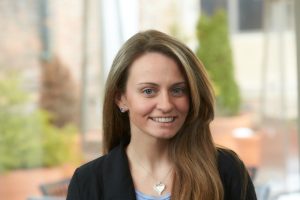As patent cases have become more frequent in recent years, local judicial districts across the nation have been adopting their own rules to help courts handle the cases more efficiently. The federal U.S. District Court for the Northern District of New York is the latest to do so. The rules are an attempt to help […]
Get Instant Access to This Article
Become a Central New York Business Journal subscriber and get immediate access to all of our subscriber-only content and much more.
- Critical Central New York business news and analysis updated daily.
- Immediate access to all subscriber-only content on our website.
- Get a year's worth of the Print Edition of The Central New York Business Journal.
- Special Feature Publications such as the Book of Lists and Revitalize Greater Binghamton, Mohawk Valley, and Syracuse Magazines
Click here to purchase a paywall bypass link for this article.
As patent cases have become more frequent in recent years, local judicial districts across the nation have been adopting their own rules to help courts handle the cases more efficiently.
The federal U.S. District Court for the Northern District of New York is the latest to do so. The rules are an attempt to help judges and litigants streamline patent cases and provide a detailed process for how they’re handled, says George McGuire, chairman of the intellectual-property law group at Syracuse–based Bond, Schoeneck & King, PLLC.
Judges aren’t always familiar with the flow of patent cases and their various complexities, and litigants themselves often disagree vehemently over processes, McGuire says. Creating a set of standard local rules should help the cases proceed more smoothly.
For companies in the area that might find themselves in a patent case, the most important aspect of the rules is their stance on early disclosures. The rules require both sides to make some key disclosures about their positions early in the case, McGuire says.
That makes the exchange of information between parties more efficient and helps crystallize the important issues in the case. The disclosures could also help lead to quicker resolutions.
“It does facilitate better settlement discussions,” McGuire says.
Early disclosure means businesses need to be better prepared for the case from the outset. Some of the disclosures now required early in the process were often delayed before, McGuire says.
And those disclosures sometimes include production of documents that can take time.
“You can’t not have those things ready to go,” McGuire says. “You need to do a lot of work up front in preparing the case.”
The Northern District is the first federal district in New York to adopt local patent rules, he adds. The region includes a large swath of upstate New York stretching from Syracuse to Albany and from the Canadian border to the Southern Tier.
It’s a region with a deep bench of experience in patent law and the rules are meant to help the district take a leadership position in the area of intellectual-property cases, McGuire says.
“It is a district in which there is a high level of sophistication when it comes to patent litigation,” he says.
The Southern District of New York proposed local patent rules several years ago, but has not adopted any yet, McGuire says.
In the last decade, more courts have been adopting local rules as the number of patent cases has increased. At first, it was district courts with high volumes of the cases.
Others have followed suit over the years, McGuire says.
Patent assets have become increasingly important to companies in the last 10 years, McGuire says. More firms are taking action to enforce intellectual-property rights in order to leverage those assets.
Also, there has been a movement in recent years by what are known as non-practicing entities to buy up patents in various technology areas, McGuire says. Those businesses don’t actually use the patents themselves, but attempt to strike licensing deals with other firms.
If a license agreement isn’t successful, non-practicing entities will frequently sue, McGuire says.
“There has been a huge number of cases brought by non-practicing entities,” he says. “That’s become very prevalent.”
The new rules went into effect Jan. 1.



